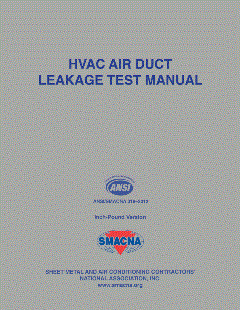
Talbot Gee, the new executive vice president and COO of HARDI.
Gee talked about his plans to continue the recent successes of HARDI, shared some of his experiences, and challenged the distribution industry. Meet Talbot Gee.
What are the organization’s plans going forward to continue to help members provide value to their customers?
Gee:Given the global perspective that HARDI has, we are trying to discover how we can help them to have a distinct advantage.
HARDI, like every association, has constrained resources and, while we must focus on our own efficiencies, we must also strive to be an on-call, 24/7 resource consulting arm for our members. The demands on us as an association are many times greater than they were only five years ago. We also must be more aggressive; we used to simply field questions from our members as they came to us, now we must knock on their doors and proactively bring solutions that help their businesses.
Did you ever expect to be leading this organization when you assumed your first position?
Gee:I actually joined the organization five years ago, with the succession plan already in mind. Don Frendberg and I had known each other for quite some time, and he asked me to join HARDI, knowing that someday we would begin a transition.
What is your background?
Gee:I have been in association management since 1999, working for a standalone association in D.C. that represented wholesalers of long distance minutes, before cell phones were really booming. Then I worked in Philadelphia as executive and associate director for four distributor organizations. While gaining that management company experience, I met Don.
Has Don asked you to grow a moustache as you take over for him?
Gee:[Laughing], I am a big Philly fan, so I always grow a playoff beard if they are in the hunt. Any time a Philly team wins, I bring in breakfast for the staff, and a hot breakfast if a big upset takes place.
HARDI seems to have made strides in recent years to reassert a strong leadership for the distribution channel, as distribution had been somewhat under assault as a dying breed. Your comments?
Gee:I don’t think distribution is under assault, I think the model is always under refinement. However, what we have found is that wholesalers that are committed to the science of distribution will outperform any other competitor. The world of distribution has no doubt been changing, but I think it continues to change for the better.
Maintaining the brand of distribution, the impact, has always been very important for HARDI to assist its members. That is part of the value of HARDI.
One of the largest dynamic shifts in recent years has been the view of manufacturer-owned distribution. During cycles when sales are good and the market is growing, the theory of being vertical sounds great at the 30,000 foot level. The minute the market turns, and sales become harder, and returns become worse, that vertical distribution system looks like a massive drain on the books for a manufacturer. The share vs. margin conflict causes manufacturers to question the distribution model. The manufacturer wants more share, but the distributor is not convinced an investment and expansion will create profit. The share (most manufacturers) vs. margin (most distributors) objectives provide a common conflict when manufacturer-distributor relationships are not treated as partnerships, but when they are and these two drivers are attacked in coordination, the result is unbeatable.
What are the biggest challenges facing distributors?
Gee:Our benchmarking tells us that there is a profit margin crunch. How can a company grow services when margins are shrinking? The current situation is going to require distributors to be more scientific, data driven, and analytical.
In many respects, getting more for less is going to be the model for the long run. The likelihood that we get back to 2006 levels is not real strong at this time; we are in a market that has flattened somewhat, so how do we experience growth? Our members must have much more reliable data and analyses at their fingertips to enable them to further minimize risks, maximize investment and expansion opportunities, and push even further advances in productivity.
How has the Market Center Distribution (MCD) program fared?
Gee:That program was more a compilation of concepts. We never had a major deliverable out of that, but the concept was important because the power of distribution is measured by the performance in an individual market. Distributors have a vested interest in knowing the contractors better than anyone else, and by knowing the products better than anyone else for that market.
I wouldn’t be surprised if we were to develop future steps for the MCD model, and the deliverables that may come from it. In the meantime though, it’s never been truer than now that our distributors’ biggest value is their local expertise in every market they’re in. No one else can match it.
What would you want to see HARDI look like in five years?
Gee:We will be growing our offerings of soft skills and career development. That is the primary focus of our educational programs. Also, I think we have made a lot of progress in our public relations, but we still get too many questions from prospective members such as: Who is HARDI? What is HARDI? Even though we are certain that our membership represents more than 80 percent of the market sales volume, in terms of companies our membership might only be 40 to 50 percent.
Internationally, we look for potential growth in South America, Canada, and other global opportunities. Any place that we see two-step distribution or where HVACR supply changes are forming, we think HARDI should be the recognized voice. We have a basis of very strong and engaged members, but will continue to add to it and make sure our existing members are taking full advantage of the competitive tools available to them.
Publication date:02/14/2011







